

Women Life Freedom
The second anniversary of Mahsa Amini's murder and the start of Iran uprising was commemorated in Minneapolis on September 15, 2024. This event commemorated the over 500 protesters killed in Iran during the 2022 uprising, and the many who have been executed for taking part in protests. The plight of political prosoners in Iran was also highlighted in this event.

The event started with a message from MCSDI (the text of the message can be found in the statements section of this site), followed by addresses by the representatives of Gov. Walz/Lt. Gov. Flanigan's office and Center of Victims of Torture in support of the event and the Iranian people.
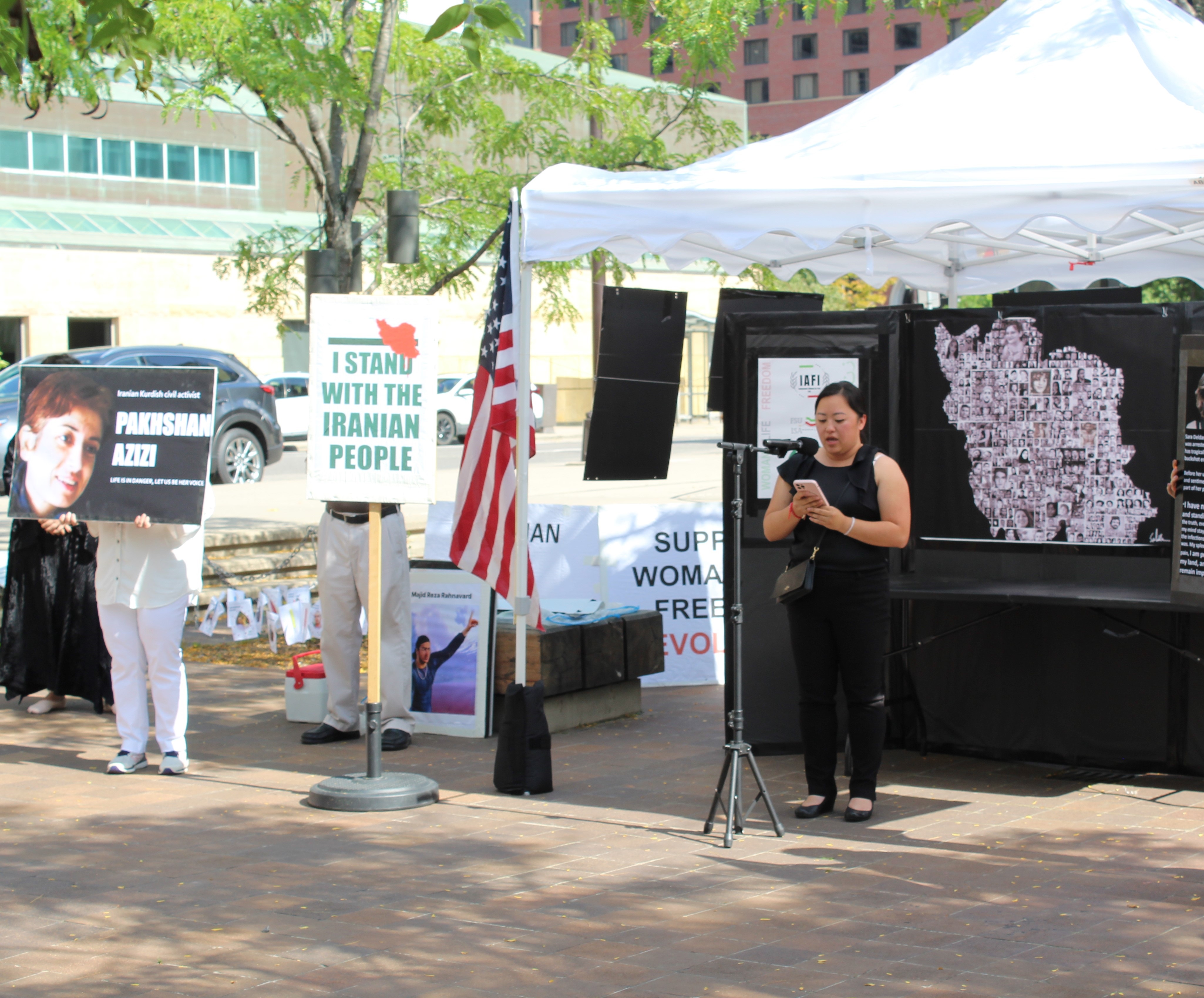

Following that, the proclamation of Minneapolis Mayor Jacob Frey, declaring September 16, 2024 as Mahsa (Jina) Amini Day in the City of Minneapolis was read.
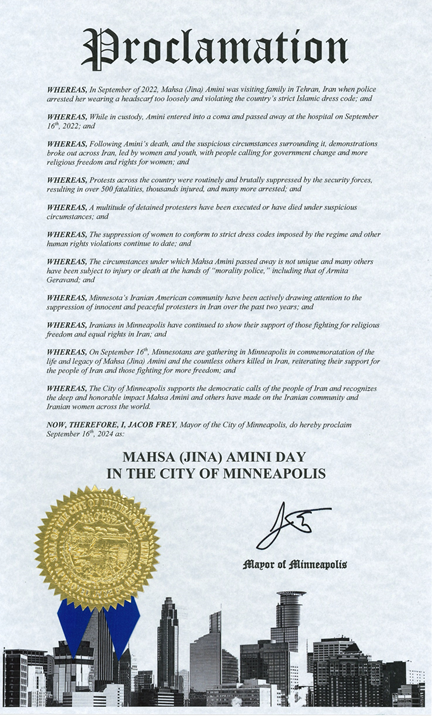
Subsquent to that, two message of support from Congresswoman Betty McCollum, representing Minnesota's fourth district in the US House of Representative, and representative Sandra Feist, represenating ditsrict 39B in Minnesota House of Representatives were read.
Congresswoman McCollum, in her message, said: "I commend you all for your strong determination, bravery and courage to stand up against the Clerics of Iran for equality and justice for women and girls. Amini's death has sparked a Women, Life, Freedom movement to champion for the rights of women and girls in Iran and around the world. We must all continue to fight for social justice, freedom, equality and dignity for women and girls at home and abroad."
Representative Feist, in her message, stated: " As a Minnesota State Representative and as an immigration attorney, I stand in solidarity with the Iranian people. The brave protests and calls by the Iranian people for freedom of expression are truly inspiring. Thank you to all attending today for reminding Minnesotans that these efforts to create a more open society in Iran are ongoing. I support you."
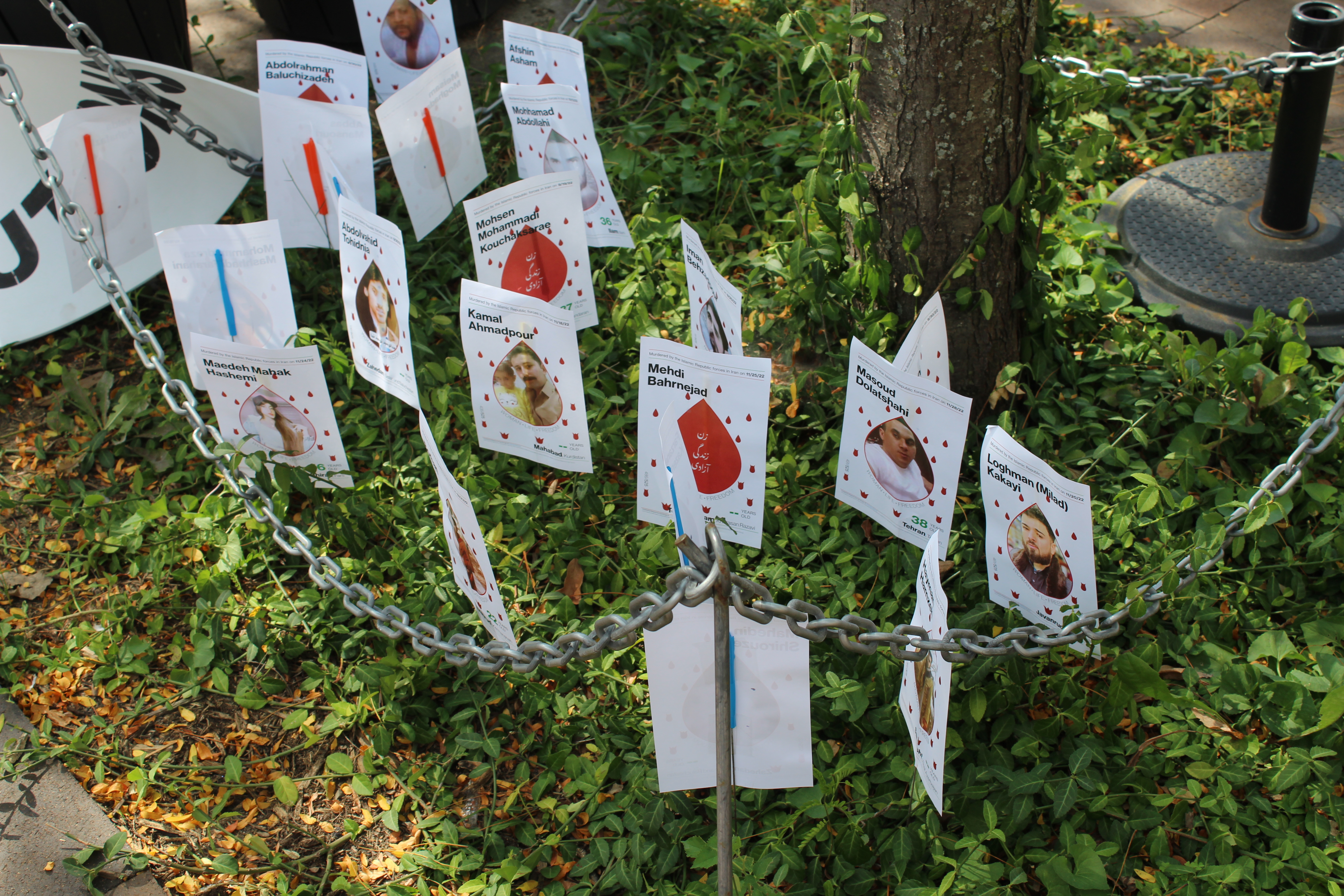
The next portion of the program was a performance depicting Mahsa Amini's murder and subsequent uprising, and the arrest and imprisonment of thousands in Iran. A desctiption of the performance follows:
The concept of this piece is centered around two main symbols, designed to represent the contrasts yet deep connections between identity and struggle.
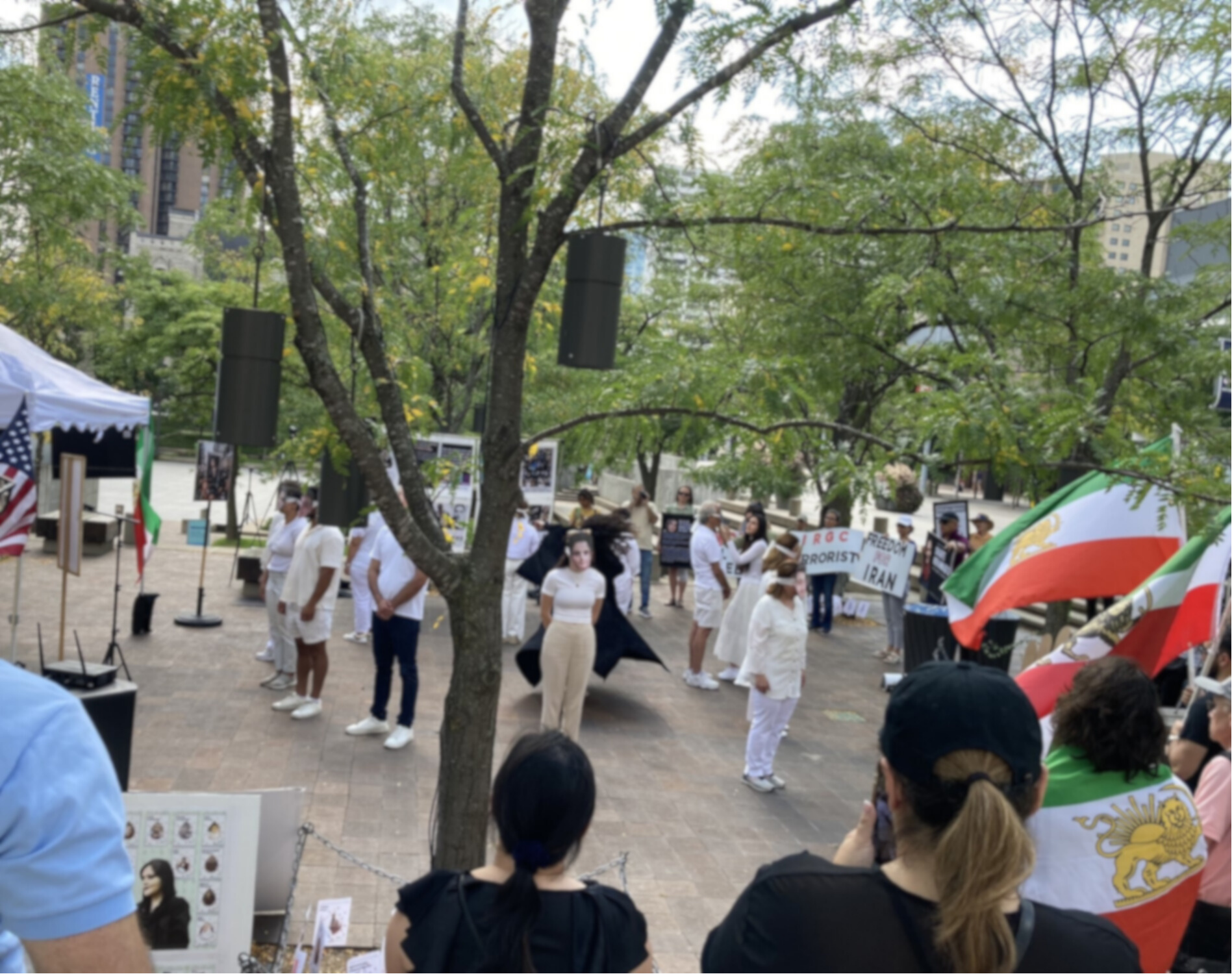
The character dressed in white, is a symbol of Iran and its people, representing purity, heritage, and the enduring essence of Iranian identity. She embodies hope and resilience, and despite all the pain and suffering witnessed through the sacrifices of the fallen, she continues to look towards a bright future.
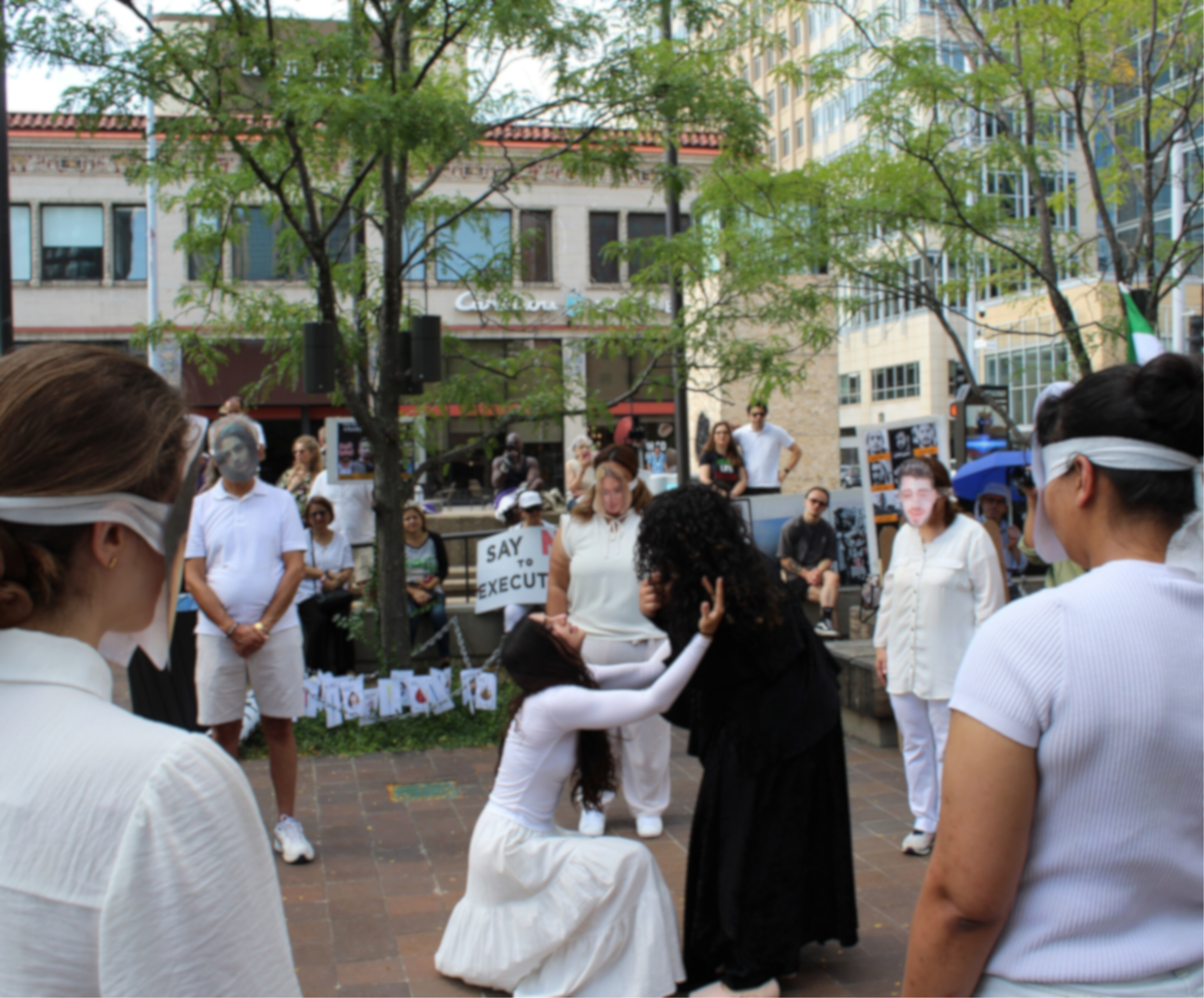
In contrast the character, dressed in black, symbolizes Mahsa, and signifies the tragic and brutal nature of her untimely death. In this narrative, after her death, she not only struggles to comprehend the reality of her own passing and the deaths of others, but she can hardly believe how her death sparked the beginning of a vast movement and a national revolution.
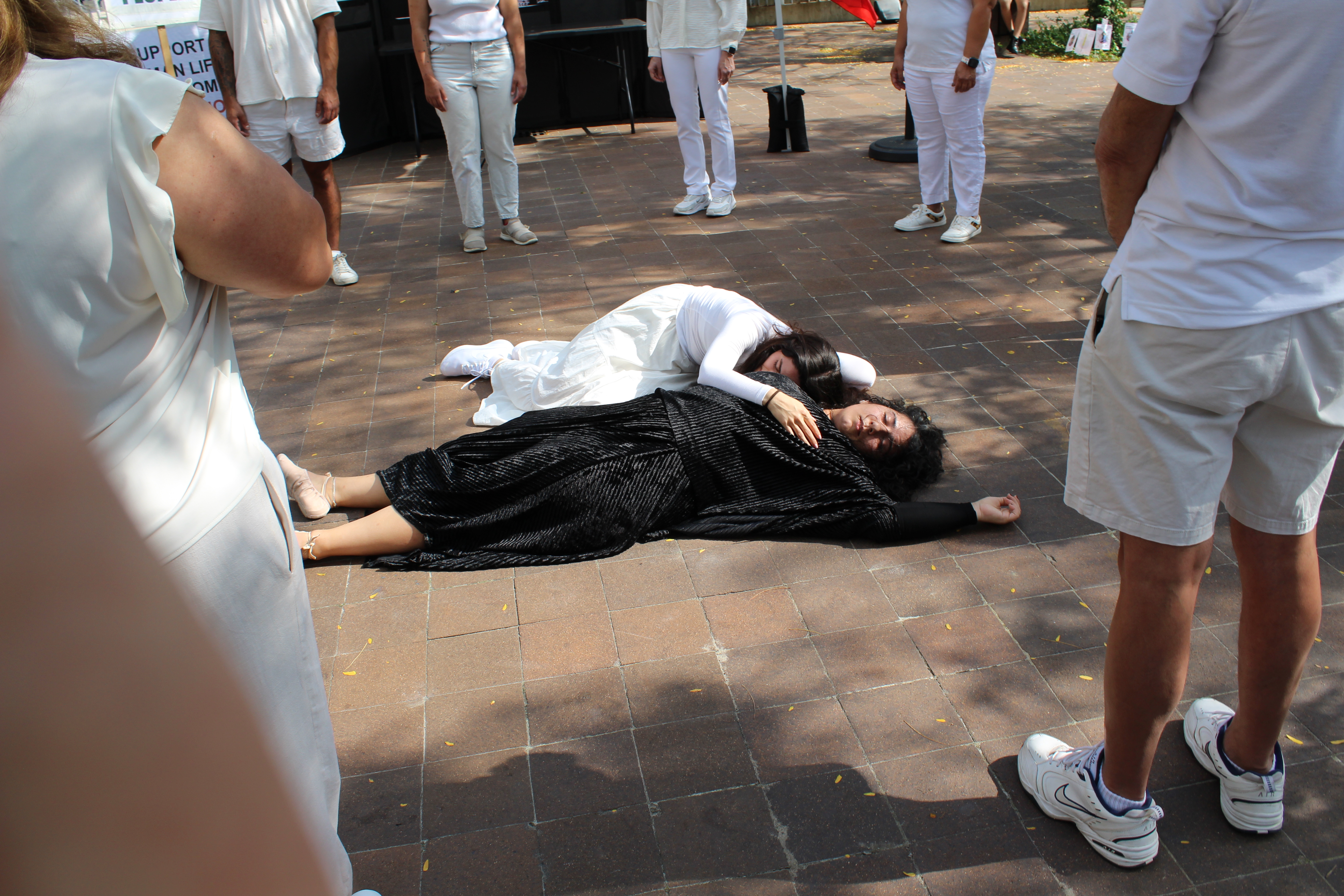
The bond between these two symbolic figures forms at a pivotal moment, where “Iran”, fully aware of the pain and suffering endured by the victims, still carries hope for life and eventual victory. She understands that the path initiated by the loss of “Mahsa” must be continued. Their connection is a representation of the persistence of this hope and resilience—hope that, even in the shadows of despair and death, remains alive, and though the road may be long and arduous, it will ultimately lead to triumph.
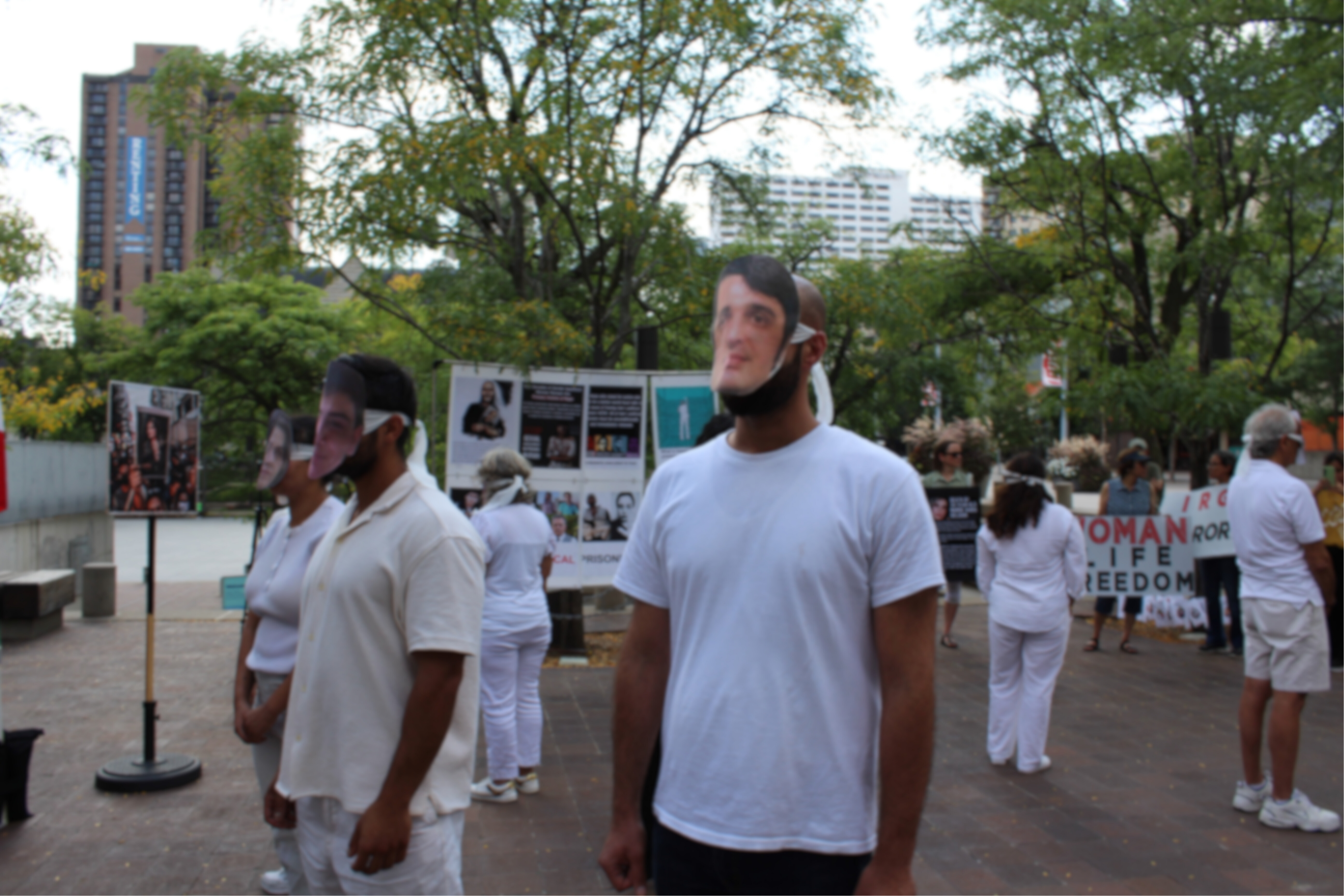
In this story, “Mahsa” represents the embodiment of the beginning and hidden strength, while “Iran” symbolizes continuity and evolution. The ultimate victory, though distant, will be born from these sacrifices and the undying hope that refuses to fade.
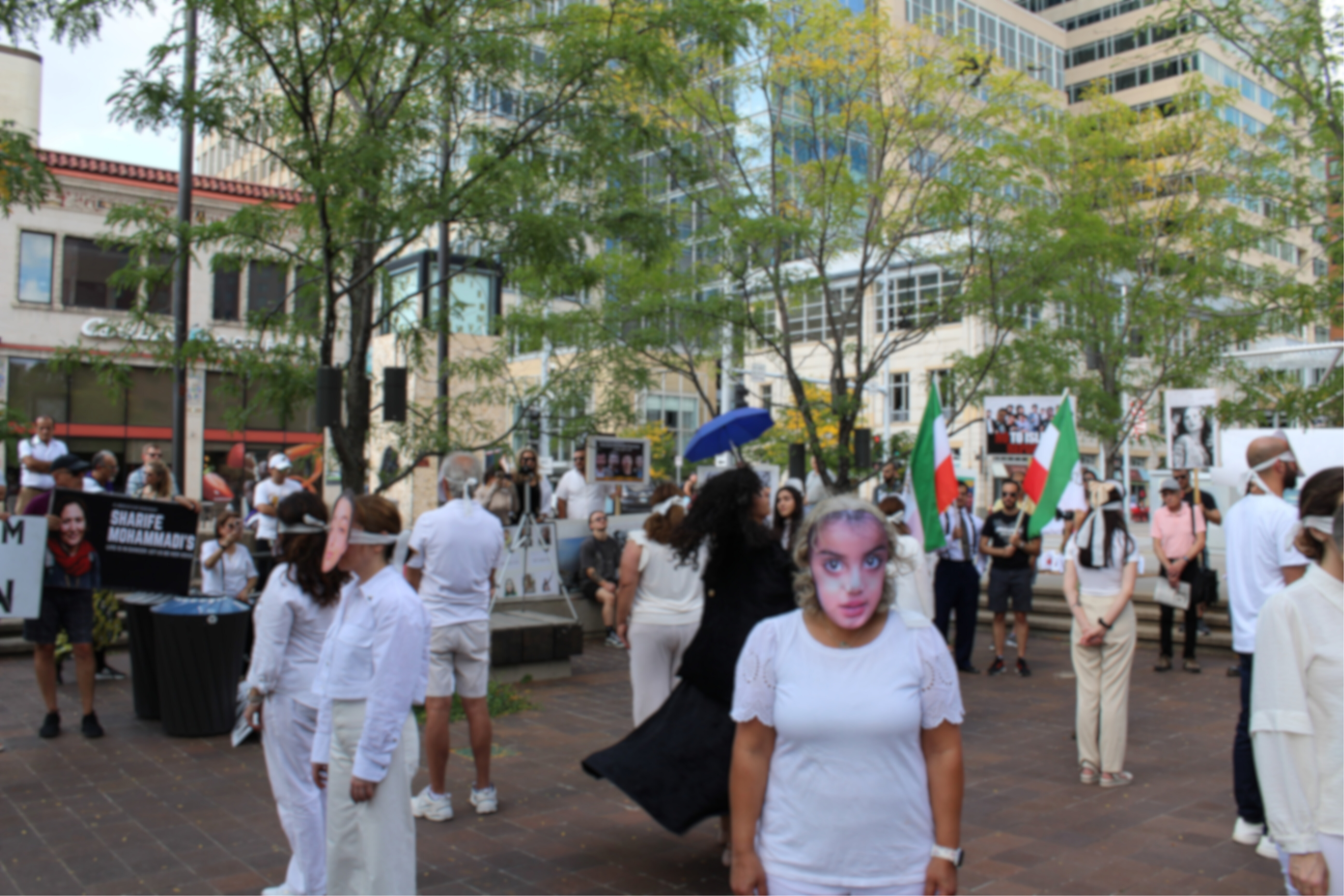
The program concluded with speeches and poetry read by local Iranian-Americans.